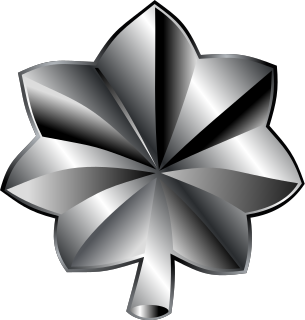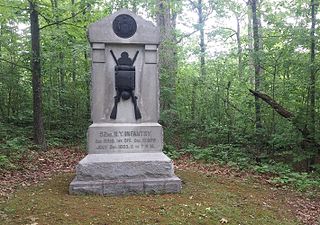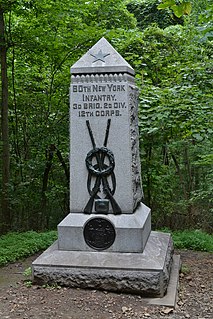Three months regiment
The 2nd New Jersey Infantry was first organized at Trenton, New Jersey for three months service on April 26, 1861 and mustered in May 1, 1861 under the command of Colonel George W. McLean.

Trenton is the capital city of the U.S. state of New Jersey and the county seat of Mercer County. it briefly served as the capital of the United States in 1784. The city's metropolitan area is grouped with the New York metropolitan area by the United States Census Bureau, but it directly borders the Philadelphia metropolitan area and is part of the Philadelphia Combined Statistical Area and the Federal Communications Commission's Philadelphia Designated Market Area. As of the 2010 United States Census, Trenton had a population of 84,913, making it the state's tenth most populous municipality. The Census Bureau estimated that the city's population was 84,034 in 2014.
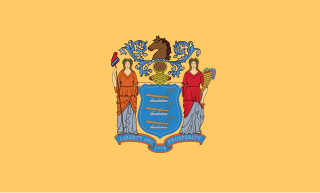
New Jersey is a state in the Mid-Atlantic and Northeastern regions of the United States. It is located on a peninsula, bordered on the north and east by the state of New York, particularly along the extent of the length of New York City on its western edge; on the east, southeast, and south by the Atlantic Ocean; on the west by the Delaware River and Pennsylvania; and on the southwest by the Delaware Bay and Delaware. New Jersey is the fourth-smallest state by area but the 11th-most populous, with 9 million residents as of 2017, and the most densely populated of the 50 U.S. states; its biggest city is Newark. New Jersey lies completely within the combined statistical areas of New York City and Philadelphia. New Jersey was the second-wealthiest U.S. state by median household income as of 2017.
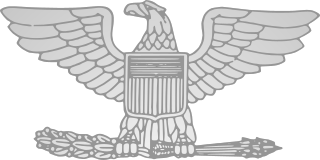
In the United States Army, Marine Corps, and Air Force, colonel is the most senior field grade military officer rank, immediately above the rank of lieutenant colonel and immediately below the rank of brigadier general. It is equivalent to the naval rank of captain in the other uniformed services. The pay grade for colonel is O-6.
The regiment was attached to Runyon's New Jersey Brigade, Defenses of Washington, to June 1861. 1st Brigade, Runyon's Reserve Division, McDowell's Army of Northeast Virginia, to July 1861.
Left New Jersey for Washington, D.C., May 3. Reported to General Butler at Annapolis, Maryland, May 5, then moved to Washington, arriving there May 6. Camped at Meridian Hill May 24. 24. Occupied Arlington Heights, Va., May 24. Constructed Fort Runyon. Duty on line of Alexandria & Loudon Railroad until July 16. Advanced on Manassas, Va., July 16-21. First Battle of Bull Run July 21 (reserve).
The 2nd New Jersey Infantry mustered out of service July 21, 1861 at Trenton. [1]
Three years regiment
The 2nd New Jersey Infantry was reorganized at Camp Olden in Trenton for three years service on May 27, 1861 under the command of Colonel Samuel L. Buck.
The regiment was attached to 2nd Brigade, Runyon's Reserve Division, McDowell's Army of Northeast Virginia, to August 1861. Kearney's Brigade, Division of the Potomac, to October 1861. Kearney's Brigade, Franklin's Division, Army of the Potomac, to March 1862. 1st Brigade, 1st Division, I Corps, Army of the Potomac, to April 1862. 1st Brigade, 1st Division, Department of the Rappahannock, to May 1862. 1st Brigade, 1st Division, VI Corps, Army of the Potomac and Army of the Shenandoah, to July 1865.

The Army of the Potomac was the principal Union Army in the Eastern Theater of the American Civil War. It was created in July 1861 shortly after the First Battle of Bull Run and was disbanded in May 1865 following the surrender of the Confederate Army of Northern Virginia in April.

I Corps was the designation of three different corps-sized units in the Union Army during the American Civil War. Separate formation called the I Corps served in the Army of the Ohio/Army of the Cumberland under Alexander M. McCook from September 29, 1862 to November 5, 1862, in the Army of the Mississippi under George W. Morgan from January 4, 1863 to January 12, 1863, and in the Army of the Potomac and Army of Virginia. The first two were units of very limited life; the third was one of the most distinguished and veteran corps in the entire Union Army, commanded by very distinguished officers. The term "First Corps" is also used to describe the First Veteran Corps from 1864 to 1866.

The VI Corps was a corps of the Union Army during the American Civil War.
Duty in the Defenses of Washington, D.C., until March 1862. Advance on Manassas, Va., March 8-15. Advance from Alexandria to Bristoe Station April 741. Embarked for the Virginia Peninsula April 17. Siege of Yorktown, Va., April 19-May 4 (on transports). West Point May 7-8. Seven Days before Richmond June 25-July 1. Battle of Gaines's Mill June 27. Garnett's Farm June 27. Golding's Farm June 28. Charles City Cross Roads and Glendale June 30. Malvern Hill July 1. At Harrison's Landing until August 16, Movement to Fort Monroe and Manassas, Va., June 16-26. Pope's Campaign in northern Virginia August 26-September 2. Action at Bull Run Bridge, Manassas, August 27. Second Battle of Bull Run August 30. Cover Pope's retreat to Centreville August 30-31. Maryland Campaign September 6-22. Battle South Mountain September 14. Battle of Antietam September 16-17. Duty at Sharpsburg, Md., until October 29. Movement to Falmouth, Va., October 29-November 19. Battle of Fredericksburg December 12-15. Duty at Falmouth until April 27, 1863. "Mud March" January 20-24. Chancellorsville Campaign April 27-May 6. Operations at Franklin's Crossing April 29-May 2. Battle of Maryes Heights, Fredericksburg, May 3. Salem Heights May 3-4. Banks Ford May 4. Gettysburg Campaign June 11-July 24. Battle of Gettysburg July 2-4. Pursuit of Lee to Manassas Gap, Va. Fairfield, Pa., July 5. At and near Funkstown, Md., July 10-13. Near Warrenton, Va., until September 15, and at Culpeper until October. Bristoe Campaign October 9-22. Advance to line of the Rappahannock November 7-8. Rappahannock Station November 7. Mine Run Campaign November 26-December 2. At Brandy Station until May 1864. Campaign from the Rapidan to the James May 3-June 15. Battle of the Wilderness May 5-7. Spotsylvania May 8-12. Spotsylvania Court House May 12-21. Assault on the Salient, "Bloody Angle," May 12. North Anna River May 23-26. On line of the Pamunkey May 26-28. Totopotomoy May 28-31. Battles about Cold Harbor June 1-12, 1864. Before Petersburg June 17-19. Siege of Petersburg until July 9. Jerusalem Plank Road June 22-23. Moved to Washington, D.C., July 9-11. Repulse of Early's attack on Fort Stevens and the northern defenses of Washington July 11-12. Pursuit of Early to Snicker's Gap, Va., July 14-23. Sheridan's Shenandoah Valley Campaign August 7-November 28. Strasburg August 14-15. Cedar Creek August 15. Winchester August 17. Charlestown August 21-22. Battle of Winchester September 19. Fisher's Hill September 22. Battle of Cedar Creek October 19. Duty in the Shenandoah Valley until December. Moved to Washington, D.C., then to Petersburg, Va. Siege of Petersburg December 1864 to April 2, 1865. Dabney's Mills, Hatcher's Run, February 5-7, 1865. Appomattox Campaign March 28-April 9. Fall of Petersburg April 2. Pursuit of Lee April 3-9. Appomattox Court House April 9. Surrender of Lee and his army. March to Danville April 23-27 and duty there until May 18. March to Richmond, Va., thence to Washington, D.C., May 18-June 3. Corps review June 8.
Non-veterans were relieved for muster out at the end of May 1864. Veterans and recruits were temporarily attached to the 15th New Jersey Volunteer Infantry under orders of May 29, 1864, until December 17, 1864, when the regiment was reorganized as a battalion. Non-veterans mustered out at Newark, New Jersey on June 21, 1864. The 2nd New Jersey Infantry mustered out of service July 11, 1865 at Hall's Hill, Virginia.
The 15th New Jersey Volunteer Infantry was an American Civil War infantry regiment from New Jersey that served from September 1862 through 1865 in the Union Army.

Newark is the most populous city in the U.S. state of New Jersey and the seat of Essex County. As one of the nation's major air, shipping, and rail hubs, the city had a population of 285,154 in 2017, making it the nation's 70th-most populous municipality, after being ranked 63rd in the nation in 2000.










